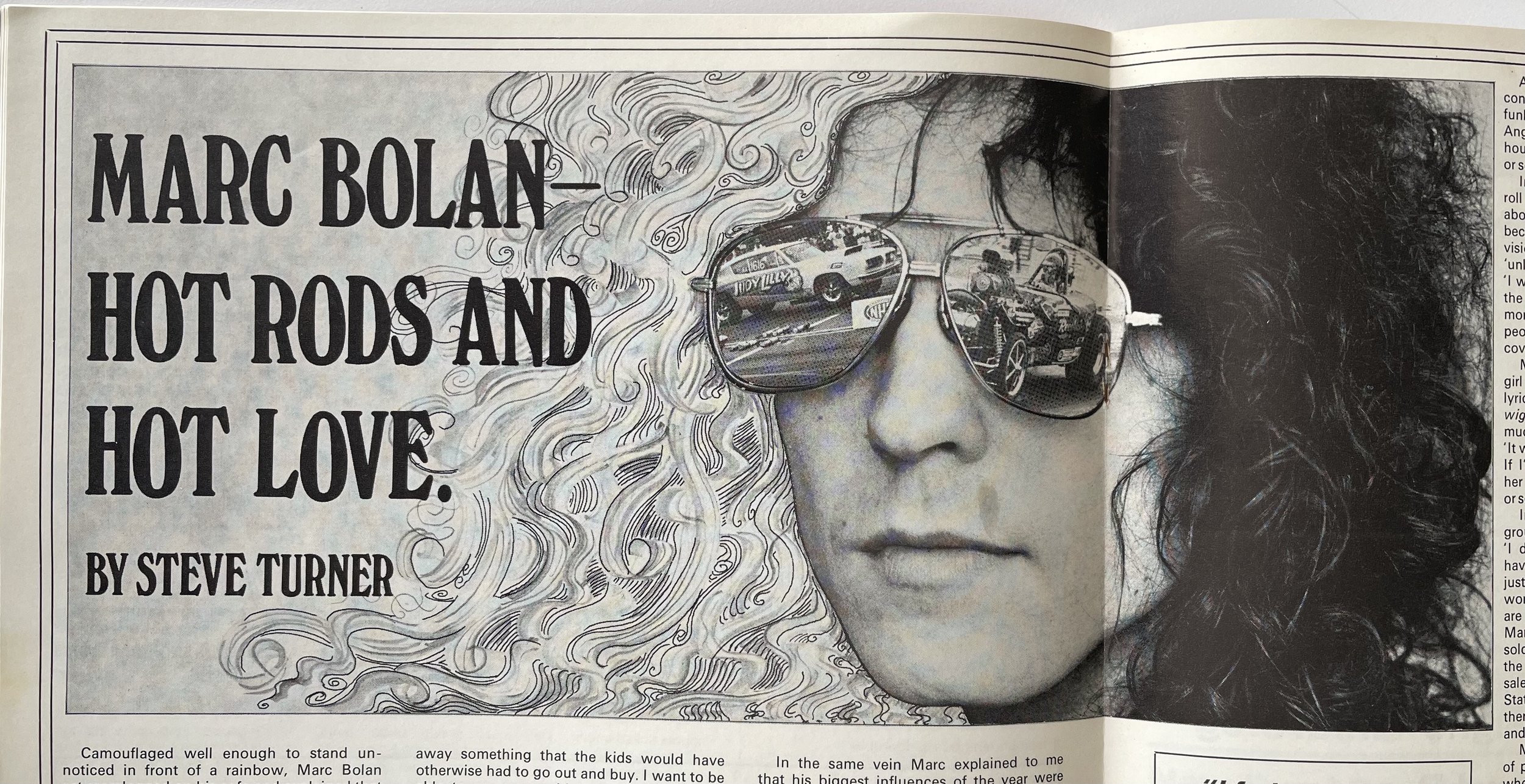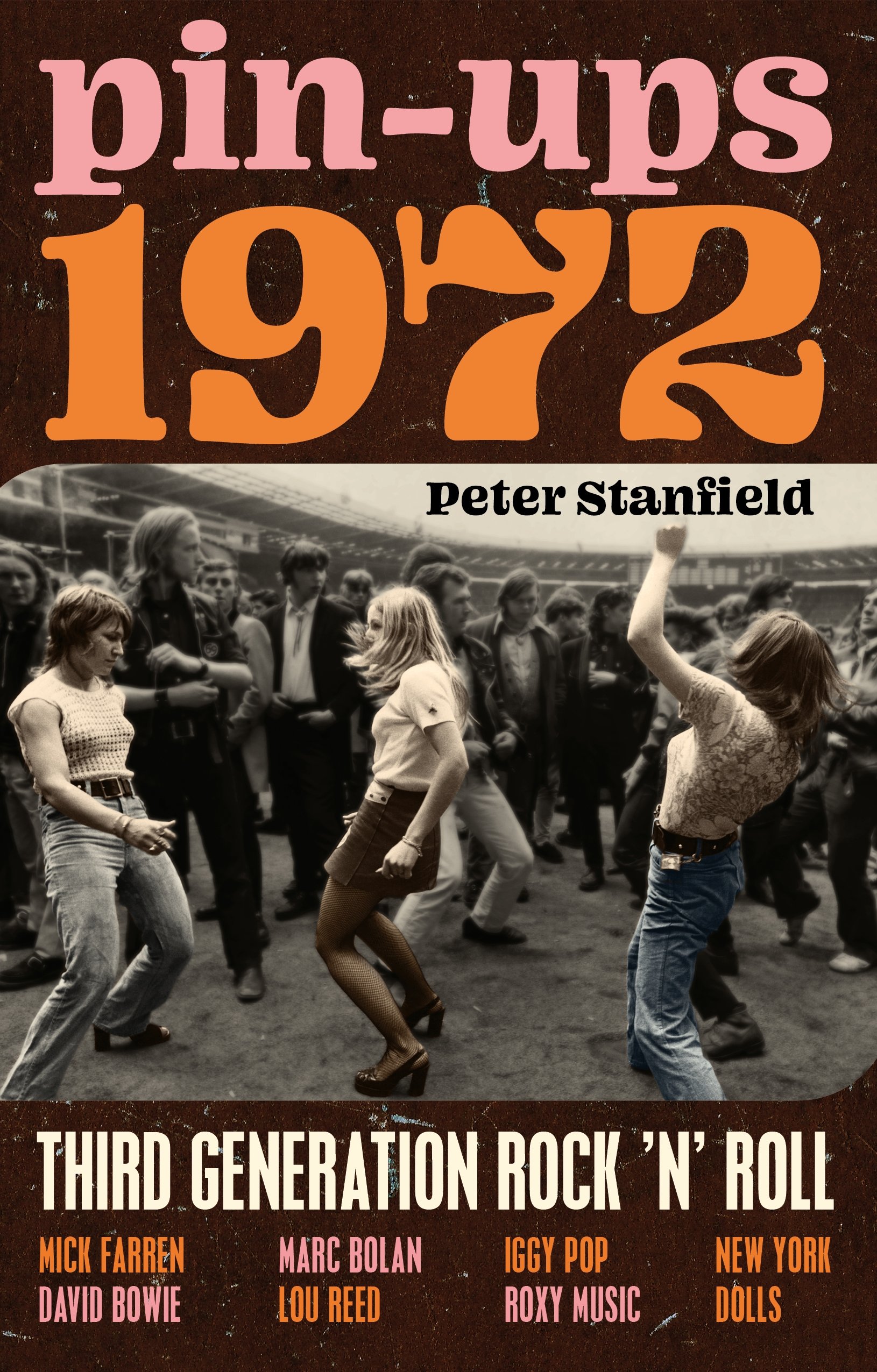Mark Paytress is among the best sleeve note writers, just a notch or two below the master, Bill Millar. I’ve lost count of the times I’ve bought a new package of T. Rex recordings because I wanted, most of all, to read what he had to say. The duplication of Bolan recordings in my collection can take care of themselves but Paytress, despite the familiarity of the material he is annotating and contextualising, is never repetitious. His observations are diamond bright and sharp. He never resorts to cliché. He has always found something new to say and a novel way to approach his story. His writing has added greatly to an appreciation of Bolan’s music.
His Bolan biography stands head and shoulders over any other, by whatever measure Paytress is a fabulous writer and a great story teller.
Glam! When Superstars Rocked the World, 1970–74 doesn’t disappoint. The topic is as familiar as any trend in post-first generation rock ’n’ roll – you already know the story and all its twists and turns. With Glam!, Paytress has not been as inclusive as Simon Reynolds with Shock and Awe (2016) but he is considerably less exclusive than Barney Hoskyns was with Glam! (also with an exclamation mark that promises MORE!), published in 1998 to coincide with Todd Haynes Velvet Goldmine, and my own Pin-Ups 1972: Third Generation Rock ’n’ Roll (2022). The key figures are of course, Bolan, Bowie and Roxy Music, but he gives generous space to Roy Wood, Slade, Rod Stewart, Elton John, Alice Cooper, Mott the Hoople, Gary Glitter and, I think, most significantly to The Sweet.
Extensively illustrated with a superbly curated mix of agency photographs and pop ephemera, especially the long lost essential Seventies’ adornment of the faux silk scarf, a fashion accessory that crossed-over effortlessly with football culture (I yearn for its return). Glam! is a joy to idly flick through and a pleasure to read. Paytress holds to a rough chronology, beginning with the withdrawal of the promises of the Sixties with the Isle of Wight festival. That event is figured as a moment of death and rebirth: Hendrix’s overdose and festival dj Jeff Dexter playing, again and again to the huddled masses, a test pressing of ‘Ride a White Swan’. The book’s coda refigures the trope with the death of Bolan and a rebirth with punk.
In between, even the most jaded of readers will find much to amuse, ponder over and debate. You might argue that, because Paytress is telling the story, T. Rex has been given the dominant role. This might be true, but I also think he makes the case for continuing to weave Bolan into the narrative after the rise of Ziggy. The fall of T. Rex is as important as any contender, any bright new challenger on the scene. It also works quite brilliantly alongside the travails of The Sweet: their acceptance that being the puppets of Mike Chapman, Nicky Chinn and producer Phil Wainman will give them the success they couldn’t earn on their own and their bid for autonomy, just as the train they rode on was about to run out of track, is the stuff of pathos. Someone really does need to write a pop history of The Sweet, Chinnichap and the British 70s pop machine. . . Step up, step up right up!.
Footnote:
I’ve always cherished Bolan’s wilful, creative acts of plagiarism in his song writing, ‘Beltane Walk’ as a rewrite of Jimmy McCracklin’s ‘The Walk’ and Howlin’ Wolf’s ‘You’ll Be Mine’ for ‘Jeepster’ being the two most egregious or brilliant of the many. Mark Paytress has brought a new one to my attention, Johnny Burnette Trio’s ‘Honey Hush’ as the basis for ‘Jewel’, the second track on side one of the first T. Rex album. Play the two recordings back-to-back to know this to be true, but also to realise just how inventive Bolan has been in making an abstract out of his source material. Marc Bolan – pop genius.
This beautiful original courtesy of The Seth Man
















